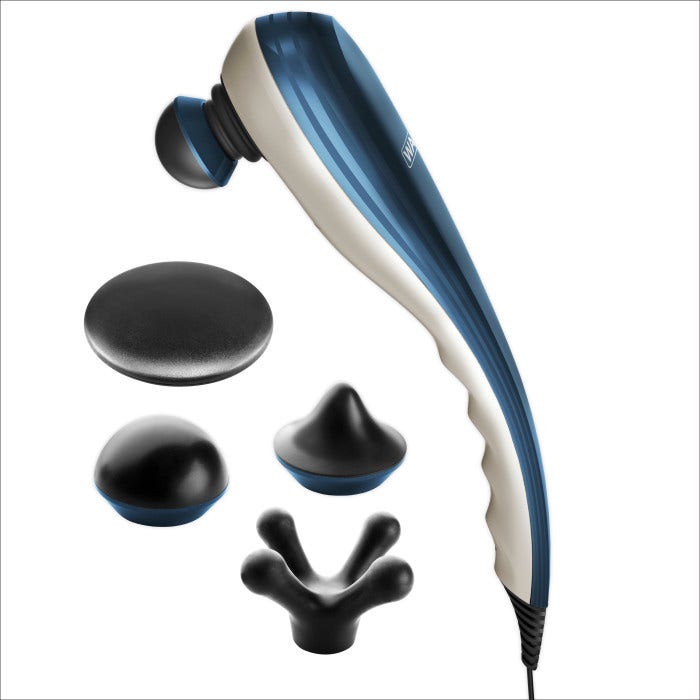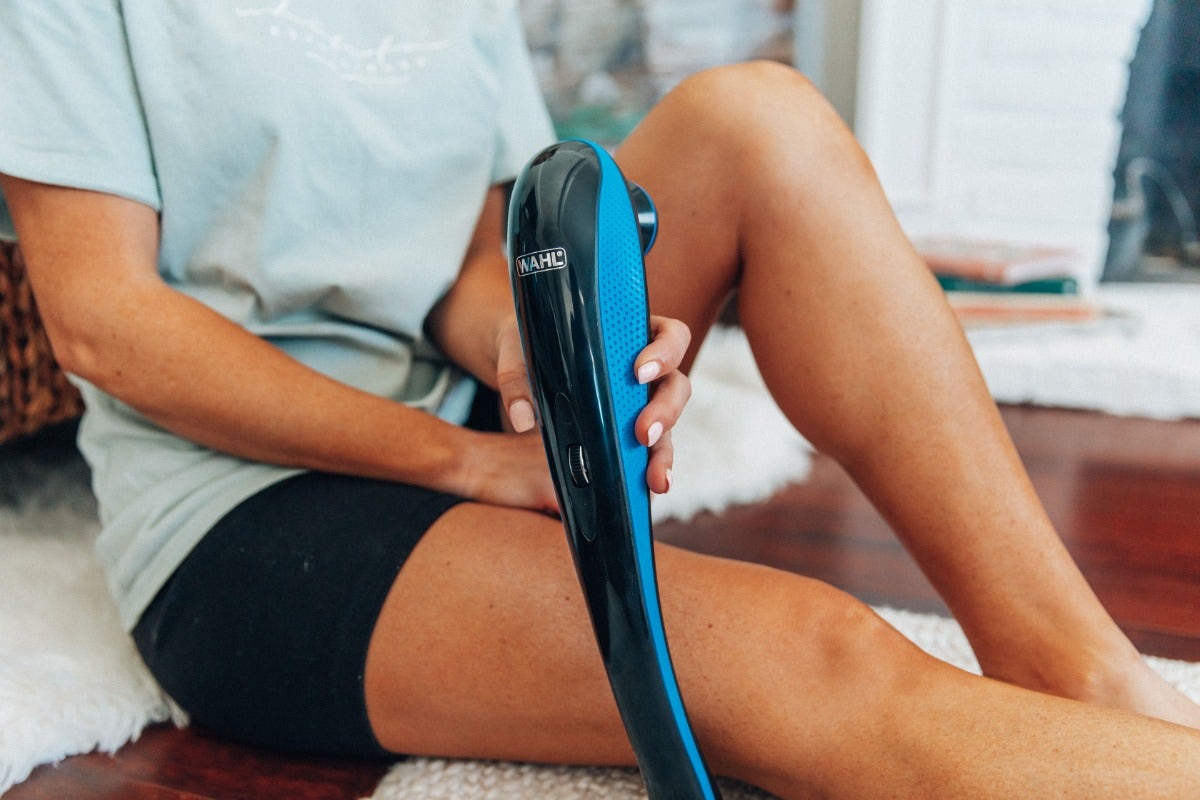5 Questions To Ask When Searching for Pain Relief
For millions of Americans, pain is a daily struggle. It's so pervasive that far too many people are just dealing with it, instead of addressing it. So, in recognition of National Pain Awareness Month this September, I've compiled some questions I'm hoping will put people on the path toward a more pain-free life:
1. What are non-medication options to treat pain?
There are several non-medication options to treat pain effectively, including the following based on studies involving pain:
-
Yoga.
After 12 weeks of yoga, women with back pain reported less pain. The women who didn’t do yoga reported their back pain was worse after 12 weeks.
-
Music
. A study surveying 156 women – half of whom listened to music during labor, and half who didn’t – found that the music group reported less pain and anxiety during labor and needed less pain relief after giving birth.
- Massage. Massage therapy has been proven to decrease levels of the stress hormone cortisol, and increase levels of serotonin and dopamine, both of which help promote feelings of pleasure and wellbeing. This effect contributes to reduced feelings of pain. What’s more, you can experience these benefits from the comfort of your own home. Hand-held massagers are an excellent option for maintaining a pain-relief regimen. One option is the Wahl Deep Tissue Massager which uses high-penetration massage to attack muscle tension below the surface and can treat large muscle groups or pin-pointed problem areas through a combination of interchangeable heads and variable intensity control.
In addition, ice packs and topical remedies can be great alternatives to avoid over-dependence on medicines like ibuprofen or aspirin. Many natural products are also very effective, especially if you experience adverse outcomes related to NSAIDs or other medications. It's important to spend time looking for products that you know won't trigger an allergic response or interact with other medications. Ensure you're also staying well-hydrated, because getting enough water is key in keeping your body healthy while dealing with pain.
2. Does pain impact mental health, and if so, what can I do about it?
It’s proven that pain can cause stress and anxiety, and in turn stress and anxiety can increase your body's sensitivity to pain. This becomes a vicious cycle, but by taking control of your mental wellbeing you may find significant relief from stubborn pain symptoms. A few tips include:
-
Maintain a positive attitude.
Our minds can get into the trap of dwelling on how miserable we feel, which can trigger a downward spiral, making us dwell more on the pain. However, a positive attitude can help you cope with long-term or chronic pain, and staying optimistic can often be the key to a faster recovery.
-
Find support.
Talking to a friend or family member is great, but an alternative option is joining a support group. Sharing your feelings with people who understand your pain struggles will help you feel less alone. It’s also a way to find the strength and encouragement you need to tackle daily challenges. Additionally, you may learn tips on how to manage your pain symptoms from people who have been through it.
- Avoid the cycle of pain. Distraction can be an effective treatment for addressing pain on the basis that the less you focus on the pain, the better you feel. For example, finding something physical to do can take your mind off the pain. Deep breathing exercises is one idea, but it is also worth looking into what kind of meditation or yoga classes are in your area. If your mind is elsewhere while your body is dealing with the physical stress of chronic pain, you might be able to avoid this cycle.
3. How can I prevent pain while at my job?
Having pain at work can cause a loss in productivity and be disruptive for other employees, but there are things you can do to make your workday better. Of course, everyone's circumstances are different, so determine which of these pain-relieving techniques work best for you and give them a try:
- Work with equipment that fits you properly and is easy to operate.
- Take breaks as needed and pay attention to your body for problems that could cause pain while at work.
- Choose the proper footwear, posture belts, knee pads, back braces, etc. Be sure they fit correctly for your activity.
- Get enough sleep and rest every night and maintain a regular routine.
- Manage stress by listening to music, meditating, or deep breathing while at work.
- Maintain a healthy diet and lifestyle and avoid unhealthy sugary snacks at work or high amounts of caffeine.
- Stay socially connected while at work with your professional colleagues and positively engage and communicate with others.
4. What are ways to decrease opioid pain medication side effects or adverse consequences?
Opioids can cause slowed breathing and may lead to an opioid overdose unintentionally due to drug-drug interactions. It is important to stay informed on how to use these medications properly and work with your prescribers and physicians to ensure you use them safely and responsibly.
In addition, anti-inflammatory medications, such as NSAIDs, ibuprofen or aspirin, can cause side effects, so it may be important to consider non-medication alternatives for pain control. The bottom line: there are many ways to cope with and manage pain both in the short and long term.
5. What’s one daily habit that can have a long-lasting impact on my pain?
Exercise can have a powerful impact on how much pain we feel. Why is that? Pain is controlled by the brain and body chemicals associated with inflammation, such as serotonin or delta-endorphin. Here are some key points about the benefits of exercise:
- Exercise releases the hormones needed to reduce levels of these chemicals, thereby lowering your perception of pain.
- Proven counteracts for chronic pain are physical therapy, exercise, weight loss, and cognitive behavioral therapy.
- Additionally, exercise activates the body's natural opioids. So, it works on two levels: physically engaging and releasing hormones to reduce inflammation and improve mood, which in turn reduces pain. Plus, you reap a whole host of other benefits like improved cardiovascular function, better sleep, and increased bone density, to name just a few.
- Aiming for 30 minutes daily of physical activity, and if you’re able, aerobic activity like a treadmill or stationary bike can maximize these benefits.
- The key is to do it consistently over time, at least two to three times per week. But don't stop there! Keep exercising, and the positive effects will extend to even more areas of your life. Small changes like taking the stairs at work or taking the dog for another lap around the block can make a big difference.
Dr. Anita Gupta is a pain anesthesiologist and pharmacist and
faculty at Johns Hopkins School of Medicine. More:
anitagupta.com.
The foregoing does not create a doctor-patient relationship and is not intended to replace any guidance from your own treating physicians.
Authored by
Dr. Anita Gupta
(anitagupta.com)
Original Publish Date (8/30/21)

 India (English)
India (English)
 Middle East and Africa (English)
Middle East and Africa (English)
 South Africa (English)
South Africa (English)
 Australia (English)
Australia (English)
 Japan (日本語)
Japan (日本語)
 South East Asia (English)
South East Asia (English)
 Singapore (English)
Singapore (English)
 Europe (English)
Europe (English)
 United Kingdom (English)
United Kingdom (English)
 Argentina (Español)
Argentina (Español)
 Brazil (Portuguese)
Brazil (Portuguese)
 Colombia (Español)
Colombia (Español)
 Latin America (Español)
Latin America (Español)
 México (Español)
México (Español)
 Chile (Español)
Chile (Español)
 Peru (Español)
Peru (Español)
 Canada (English)
Canada (English)




_0_0.jpg)

